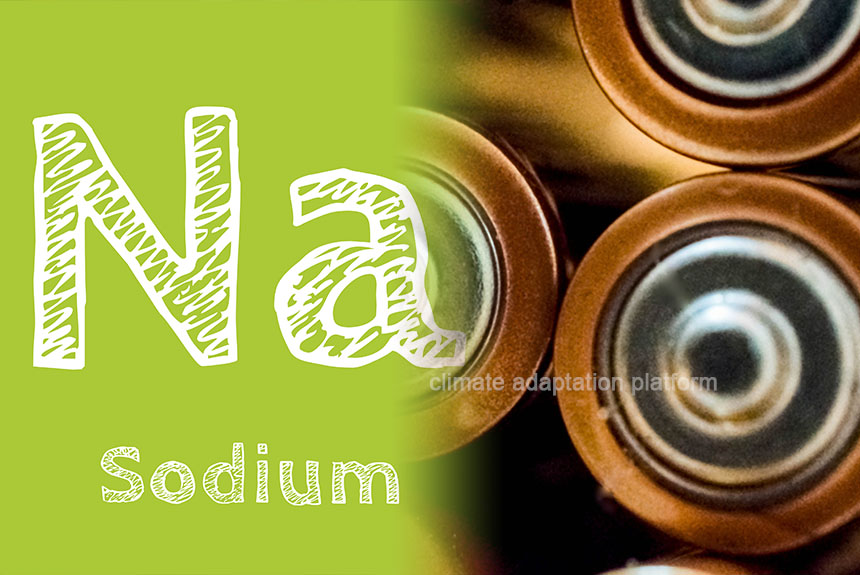Significant changes or shifts can cause some concern or anxiety. The global or national transition to clean energy requires changes to infrastructure and batteries – massive amounts for cars, trucks, homes and the electric grid. Getting a steady, stable, and sustainable supply of them is challenging for governments.
Lithium-ion (Li-ion) is the top choice for solar batteries, as this type is very reliable and can be found in leading battery storage products, including the Tesla Powerwall, Generac PWRcell, and LG Chem. They can power things from tiny phones to two-tonne electric cars and are becoming a pillar for expanding solar and wind energy. But Li-ion has disadvantages. Lithium is scarce, and the best Li-ion batteries require cobalt and nickel.
The Economist notes that much of cobalt, a primary material for the li-on battery, is mined in the Democratic Republic of Congo, where child labour is common, and working conditions are dire. Nickel, another key element for the battery, is also in short supply and mining it on land is environmentally destructive. The proposal to grab it from the seabed causes disputes due to its impact on deep ocean ecosystems.
According to the Center for Biological Diversity, deep sea mining can cause the destruction of natural landforms and the wildlife they host from sediment plumes, noise, and electromagnetic effects from the use of robotic cutting machines to mine these minerals such as nickel, copper, cobalt, manganese, zinc, gold and other rare-earth metals and minerals, much of which is used in electronics and materials for li-on batteries.
Fortunately, lithium-ion is not the only available option. Sodium-ion (Na-ion) holds a lot of potential as the next big thing for renewable energy battery storage. A growing number of firms and factories, particularly in China, are already starting to make or explore making sodium-ion batteries for electric cars and renewable energy battery storage.
Advantages of Sodium-ion batteries
Sodium, like lithium, is an alkali metal found in Group 1 of the periodic table. Both have similar properties, leading researchers to study sodium for battery storage between 1970 and 1990, the same time frame for lithium.
However, lithium had become more commercially successful than sodium and placed the latter on the back burner until now, with recent interest in looking for a more sustainable and environmentally friendly alternative to li-on batteries.
Sodium is an abundant mineral. The Economist notes, “sodium, which is found in the salt in seawater, is thousands of times more abundant on Earth than lithium and cheaper to get at. Most of the companies using sodium to make batteries today are also Chinese. But pursuing the technology in the West might be a surer route to energy security than relying heavily on lithium.”
Na-ion batteries, in contrast to Li-ion, use electrodes built from iron and manganese, which are plentiful and uncontroversial. Since the chemical components are cheap, a scaled-up industry should be able to produce batteries that cost less than their lithium counterparts, the article adds.
The only downside to sodium-ion is that it is heavier than li-ion, meaning that sodium batteries will weigh more than lithium ones of equivalent capacity, likely ruling them out when lightness is a crucial criterion. Still, sodium-ion holds so much potential as renewable energy storage when it comes to applications where weight is irrelevant, like grid storage and home batteries.
An article in Phys.org features the result of a collaboration by Australian and French scientists who discovered a new type of electrode material with a high energy density that could provide a direction for designing high-performing sodium-ion batteries. Advanced sodium-ion batteries could be used for large-scale energy storage.
Below is a summary of the difference between sodium and lithium batteries from GEP:
| Sodium-ion battery | Lithium-ion battery |
| – Sodium is more than 500 times more abundant than lithium. It can also be extracted from seawater at a low cost. – more environmentally friendly and can be transported at zero volts, making it safer. – It uses aluminium, which is cheaper than copper. – has a higher operating temperature range – it can be used in more extreme temperatures without the risk of thermal runaway. – charges faster than li-ion variants and has three times higher lifecycle. | – Lithium availability is limited to a few countries, so prices have risen more than seven-fold since 2021. – is less environmentally friendly than sodium and must always be stored with a minimum charge, increasing fire risks. – It uses copper, which is 3 to 4 times more expensive than aluminium used on sodium batteries. – has a lower operating temperature range and can cause a fire if operated at higher temperatures. |
The only disadvantage of sodium batteries is their late start. According to The Economist. “Lithium-ion batteries were first commercialised in the 1990s and have benefited from decades of investment. But the rest of the world is behind China on both fronts anyway. America and the European Union have announced enormous programmes of green industrial subsidies. If they are determined to bankroll batteries, some of the pot should go to sodium.”
Sources:
Sodium batteries offer an alternative to tricky lithium. (2023, October 26). The Economist. Retrieved from https://www.economist.com/leaders/2023/10/26/sodium-batteries-offer-an-alternative-to-tricky-lithium
Firms are exploring sodium batteries as an alternative to lithium. (2023, October 25). The Economist. Retrieved from https://www.economist.com/science-and-technology/2023/10/25/firms-are-exploring-sodium-batteries-as-an-alternative-to-lithium
Sodium-ion vs Lithium-ion Battery: Which is a better alternative? (2023). GEP. Retrieved from https://www.gep.com/blog/strategy/lithium-ion-vs-sodium-ion-battery
New cathode material for high-performing sodium ion batteries could benefit large scale energy storage. (2021, January 13). Phys.org. Retrieved from https://phys.org/news/2021-01-cathode-material-high-performing-sodium-ion.html



Leave a Reply